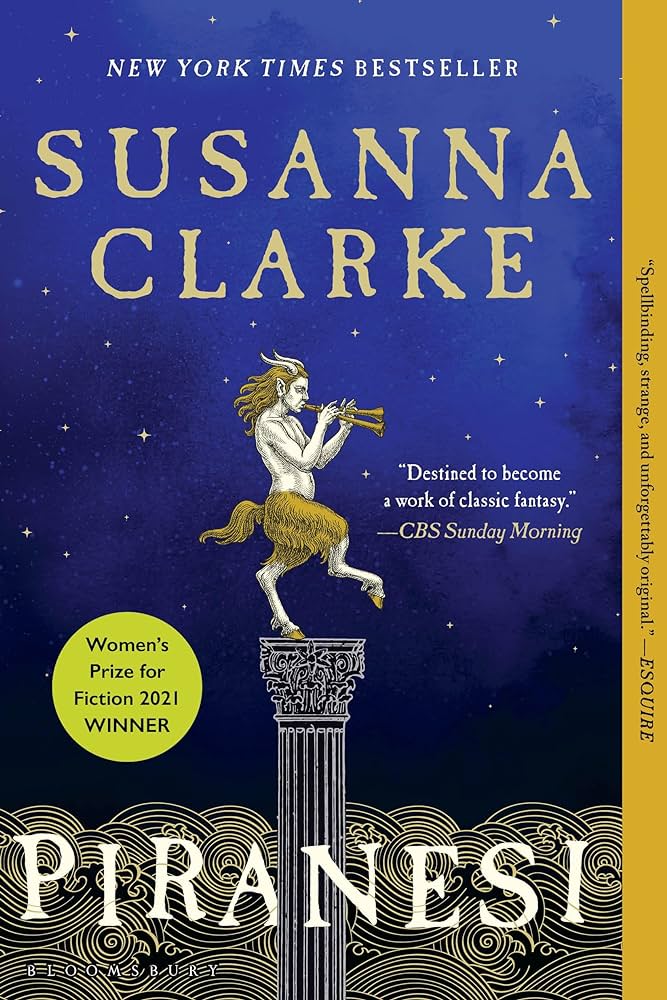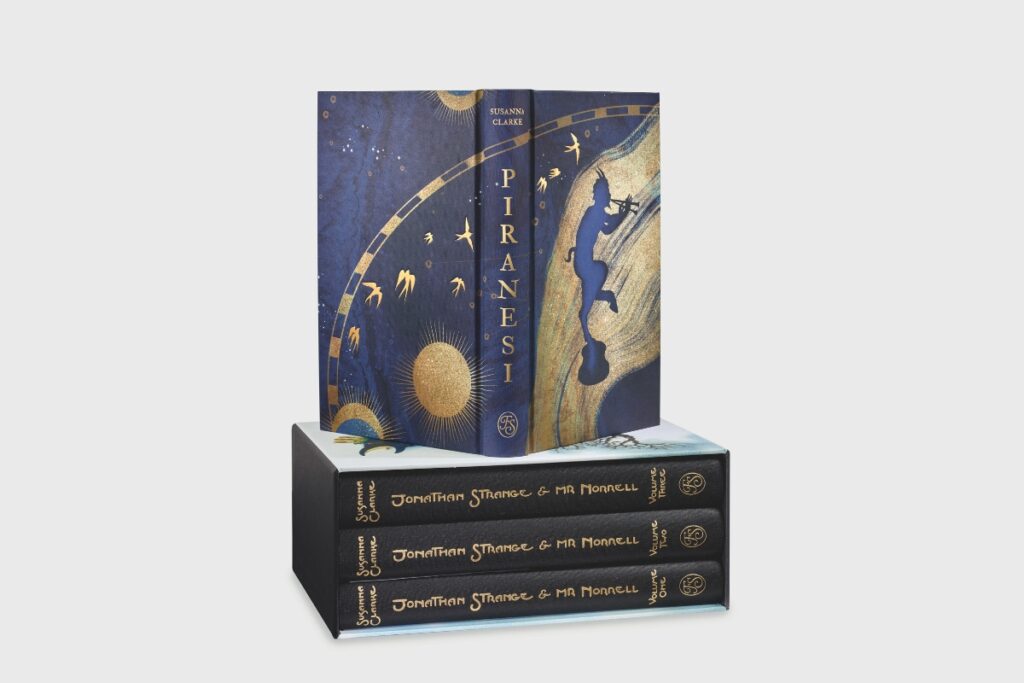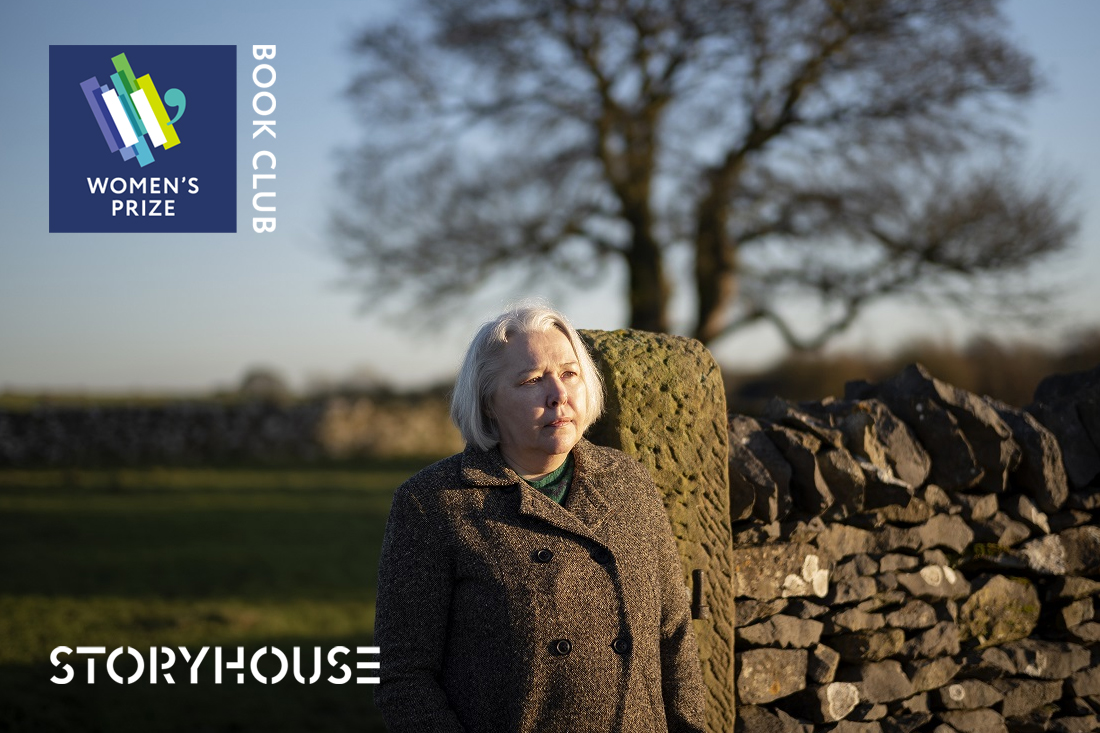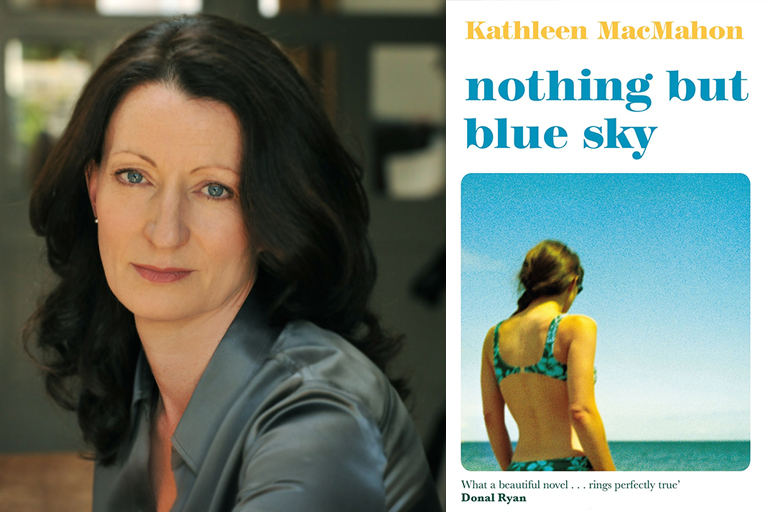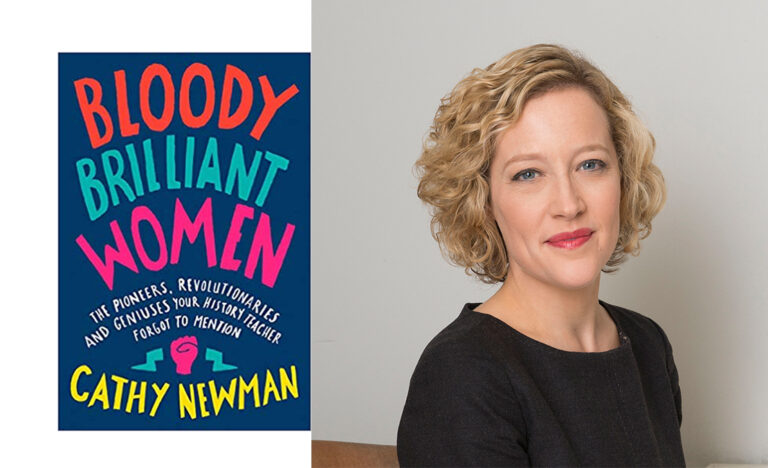We’ve partnered with The Folio Society to provide you with a sneak peek at their new edition of Susanna Clarke’s Piranesi, winner of the 2021 Women’s Prize for Fiction.
From 4-11 August 2025, we’re offering one reader on TikTok and one reader on Instagram the chance to win a copy of this stunning edition, illustrated by Julian De Narvaez. Head over to our Instagram or TikTok to enter, and read on to discover how Piranesi’s enchanting world was built…
The idea of the House has been with me for a long time – since the mid-80s. I still have a handful of typewritten sheets from those days, describing a vast house, parts of which are derelict. An ocean surges up staircases and floods rooms; and there is already one man who communes with the House, who can navigate its layout and knows the sequence of the tides. A second man, a companion of sorts, can do none of these things and relies on the first man for both information and safety.
So far, so familiar to Piranesi’s readers. But there are no statues. The statues came much later when I began to piece together these fragments to see if they would make a story.
One of the books that I had at the back of my mind at that time was the graphic novel Promethea, perhaps my favourite of all Alan Moore’s works. In Promethea the world ends, as it will from time to time. The ending is a tangible, visible event. A group of characters, gathered in a New York apartment, discovers that physical space is shifting around them, expanding and becoming something much closer to the psychic space of their imaginations. ‘This whole place,’ says one. ‘It’s like it is in my dreams . . . It’s like the room, the whole building, it’s sort of infinitely big and there’s doors where there aren’t any and stuff . . .’ One by one, the other characters agree that they too have dreamt of a house with long staircases, a house which seemed to have no end.
In dreams something can be deeply familiar and deeply strange at one and the same time. Which brings me to the tarot. I discovered the cards in the 90s. When I met my husband, he already possessed a set (a version dating from the nineteenth century called the Swiss Tarot or the 1JJ). These were the first tarot cards I’d ever seen properly. I immediately appropriated them in the way that artists and writers do. (‘This is clearly necessary to my writing/art in some way that I haven’t quite figured out yet, therefore this belongs to me. All other considerations of previous ownership are now declared irrelevant. Thank you.’ One of the reasons that he is my husband is that he puts up with indignities like this.)
As with the endless house in dreams, so with the images in the tarot: I felt as if I had always known them, and yet at the same time they were the most mysterious things in the world. As I started to write Piranesi in earnest that was the quality and the magnetic pull that I wanted the statues to have. I wanted them to feel like the tarot, like a build-your-own set of Jungian archetypes. They would be full of meaning, but it would be up to the reader to decide on the specific interpretation.
This is certainly Piranesi’s view. He says of one of his most beloved statues, the Gorilla: ‘He represents many things, among them Peace, Tranquillity, Strength and Endurance.’ Of the Horned Giants in the First Western Hall he says: ‘They represent Endeavour and the Struggle against a Wretched Fate.’
In the journal entry entitled ‘A conversation’ a flock of birds delivers a message to Piranesi. The birds fly from one statue to another; from the Angel with a Trumpet to a Ship on Waves; from a Child looking at a Flower to Mice devouring Corn, and so forth. Piranesi combines the images into predictions. This particular sequence and its interpretation rely heavily on Lenormand Oracle cards. Lenormand packs are often very beautiful, but they are different from the tarot. Lenormand is a well-behaved, nicely dressed niece to the tarot’s barefoot and barely sane, hippie-seer-rock-star aunt.
This seems a reasonable point at which to ask whether I believe in fortune-telling. To which my immediate response would be: ‘Yes. No. Sort of. Possibly.’ I will attempt a more useful answer. It seems to me that the tarot forms a propped-open door to the unconscious, but the sort of knowledge that the unconscious has is not at all the same as the things the conscious mind knows. In The Complete Lenormand Oracle Handbook Caitlín Matthews makes a distinction between fortune-telling (precise information about future events) and divination (a much broader view of the energies surrounding a person or event). It seems to me that this broad
view could fit well with the sort of thing that the unconscious mind knows about.
Thinking up all the different statues for the book was time-consuming. Not long after I finished writing Piranesi, a friend took me to see the Christmas decorations at Chatsworth, a beautiful and extraordinary stately home in the Peak District. It has a Sculpture Gallery, and there were sparkling, snowy fir trees in among the marble plinths. The effect was rather like the illustrations in The Lion, the Witch and the Wardrobe. Everywhere you looked there were beautiful marble statues in a wintry hall, and all the visitors loved it. Except for me. I thought: ‘What exactly is the point of doing this now? Months after it’s any use
to me!’ I was quite cross.
The only statue in the House which exists in our world is the Gorilla. It’s in a garden somewhere, but that’s all I know: I only ever glimpsed it for a moment in Endeavour, a televisiondrama. The statue of the Angel caught on a Rose Bush has a different story. The first novel I ever tried to write (and failed abysmally to complete) contained a scene where someone looks out of a window and sees an angel caught on a rose bush. I always feel happy when I can resurrect a detail like this. It’s a tiny bit of encouragement sent back in time to the novice writer I used to be.
– Susanna Clarke
